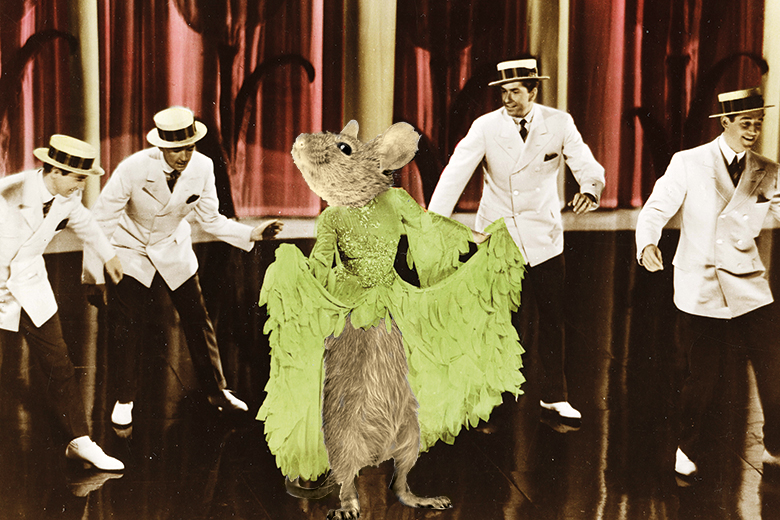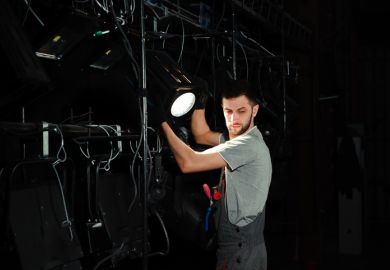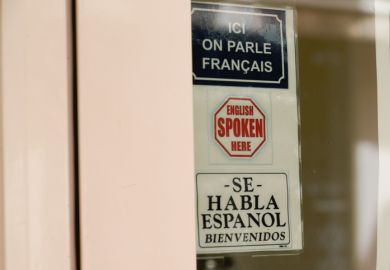Did you know that mice can sing? They can: many have likened their songs to those of canaries, linnets or even nightingales. On occasion, they have been known to trill with striking virtuosity for up to 10 minutes at a time. Anyone who still doubts this can be reassured that scientists have been studying them and recording them a good deal in the 11 years since biologist Matina Kalcounis-Rüppell, of the University of North Carolina at Greensboro, first published on the subject in 2006. Sadly, mouse songs are typically pitched far too high for human ears, but they can be manipulated to make them audible to researchers.
My own first contacts with singing mice were not via modern science, though. I was compiling a collection of intriguing and largely forgotten animal stories from the 19th-century press. Initially, I was attracted by articles that were simply great stories: a baboon issuing tickets at London’s Crystal Palace station; a collie that saved a toddler by feeding it on cake for several days; a parrot in the witness box. But as I came across any number of talking monkeys, musical elephants, painting chimps and cats and dogs with utterly bewildering homing abilities, I was struck by how much evidence such tales presented for levels of animal intelligence and emotion that I would never have previously imagined.
Adriano Reis e Lameira, a Marie Curie fellow in the School of Psychology and Neuroscience at the University of St Andrews, was very pleased to hear about the talking orang-utan of 1899, and I confess that I took this tale more seriously after learning of Lameira’s recent studies of orang-utan vocalisations. But singing mice offer a strange case study in the relations between the humanities and science, aptly illustrating the “two cultures” problem first described in 1959 by C. P. Snow.
I am not sure that I myself would have pursued their siren warblings much further had I not in recent years become used to exploring what we might call the limits of academic respectability, when studying poltergeists and ghosts. As a lifelong agnostic and rationalist, I had no interest whatsoever in these entities until I stumbled on them when researching vampire beliefs. After just a few weeks’ reading, three academic colleagues had told me of their own personal experiences, and I now have case notes on about 40 stories, all of them told to me by word of mouth. I am certain that most of those people would never have breathed a word if they had not felt me to be interested and sympathetic.
This experience taught me, among many other things, that we can learn a lot if we take people’s stories seriously. We also have an ethical responsibility to do this, in the many instances where a poltergeist is by far the most traumatic thing that has ever happened to an individual or a family. In some ways, stories have never been more important to the realm of the paranormal. Photographs and film footage have now become highly manipulable and therefore difficult to trust as paranormal evidence unless supported by other data. Yet somehow, we have got into a situation where listening to and analysing people’s stories can seem remarkably low-powered, amateurish and (most damning insult of all) purely anecdotal. At least, that is, if what they are saying is the kind of thing that most academics don’t want to hear.
When people keep saying the same things to you, you have to take notice and try to get to the bottom of it.” So said Ian Blackburn, director of building development at the Royal Albert Hall, in April 1996, explaining why he had called in ghost hunter Andrew Green after numerous complaints of paranormal experience by staff. Despite the inconclusive results of that investigation, I have found this a valuable motto when stumbling through the thinly charted shadows of ghost and poltergeist experiences. More recently, it has helped me persist beyond an initial bafflement with many bizarre animal stories, including tales of singing mice.
The first of these appeared in late August 1843, and offers us a beguiling hybrid of fairy tale and social history. A singing mouse captured by a couple in London’s Red Cross Square was first displayed to the paying public, and was presently summoned to Buckingham Palace by Queen Victoria herself for a command performance before her children. Although – with commendable republican spirit – the mouse fell silent in the presence of royalty, there is good reason to think that, by now, the animal had already changed the lives of those who caught it: residents of one of the capital’s worst slums.
The first reported American specimen was captured in 1846 and, in the following decades, singing mice were busily chewing up columns of newsprint on either side of the Atlantic. In 1865, Londoners with £10 to spare could choose between a Newfoundland dog or a singing mouse; and, come 1871, the New England minister and naturalist Samuel Lockwood was listening to a caged specimen, Hespie, with such attentive regularity that he identified its two best pieces (which he christened The Wheel Song and The Grand Role) and had his son score them in standard musical notation. My musician friend, Matthew Nisbet, nicely attuned to vocal range after playing at the Glyndebourne opera festival recently, tells me that the results look a lot like notations of birdsong and might be roughly described as “somewhere between a performance of a free jazz improvisation and a theme and variations”.
In 1877, the naturalist Henry Lee heard two mice singing at a friend’s house. Lee’s colleague, Frank Buckland, had by this stage asserted (wrongly) that singing mice were always male and that, upon dissection, they were always found to have inflammation of the larynx or similar. This latter point presently set me wondering if all mice were regularly singing, with just these few afflicted creatures falling into the range of human hearing. By 1872, Charles Darwin had picked up on Lockwood’s research, citing it as a counter to the belief that gibbons were the only singing mammals. Despite this, the singing mouse remained a creature of myth for some; in more than one case, householders visited at night by such uncanny harmonies could only attribute them to a ghost.
The 1930s was arguably the greatest decade in the history of mouse music. In 1932, Lee R. Dice, professor of human genetics at the University of Michigan, published an article titled “The songs of mice” in the Journal of Mammalogy, actively pursuing further experimental research on the subject for the next 20 years. When William Morris’ daughter, May, wrote to The Times in February 1933 about a singing mouse that she could hear at the family’s Cotswold retreat, Kelmscott Manor, their existence and rationale were still relatively obscure to the general public. But this changed dramatically after 2 May 1937, when the BBC and NBC broadcast a 15-minute Transatlantic Singing Mouse Competition, with entrants from the UK, the US and Canada. Despite a rigorous BBC sound test, in which a Welsh mouse was held up to the microphone in a bottle, the contest was not without its hiccups. Mice generally seem to sing most readily at night and contestants were initially struck dumb until someone thought to turn out the lights.
During this era, it looked as though the parallel lines of science and popular culture might just meet. Dice conducted laboratory experiments and, between 1932 and 1952, published several articles on the topic, discussing the role of sex and ultrasonics, and arguably laying down a blueprint for the findings of more recent times. Yet, despite articles in Land and Water, Scientific American and the Journal of Mammalogy, a footnote from Darwin, and the evidence of the 1937 radio broadcasts, for the rest of the century the best-known singing mice of the Western world were to be found in Disney’s Cinderella or Bagpuss – in short, kids’ stuff and fluffy whimsy.
When reviewing a new edition of Darwin’s The Expression of the Emotions in Man and Animals in 1998 in the London Review of Books, the author and polymath Eric Korn “wished that some of the more outlandish reports had been subjected to critical analysis: where, for example, does modern science stand on the case of the...musical rodent described in the Scientific American of 1871?” At this stage, modern science seemed to know less about the singing mouse than did the Fortean Times and the cryptozoologist Jonathan Downes – these being the sources that the folklore and archaeology researcher Jeremy Harte cited in a letter to the LRB a few weeks later.

Reporting on research by Joshua Neunuebel, a brain scientist at the University of Delaware, in 2015, the website Science Daily explained that we now knew for the first time that female mice sang back to their male suitors. This gives the impression that no one had ever heard female mice singing at all before this point – despite the fact that Lockwood had published on Hespie in 1871 and Dice had cited many singing females in 1932.
Meanwhile, in 2009, neuropsychologist Karen Shanor and neuroethologist Jagmeet Kanwal published a remarkable book, Bats Sing, Mice Giggle: The Surprising Science of Animals’ Inner Lives. Sadly, singing mice here proved one of the weakest links. Referring to 21st-century research, University of Arizona ecologist Mark Stromberg is quoted as saying: “This is the first time anybody has recorded mice making sounds like this”. We are also told that “we don’t yet know if mice sing duets or in a chorus”. In fact, by March 1937, an American mouse duettist had become sufficiently famous to have its obituary published in The New York Times, which announced that “death today stilled the notes of one-half of Linton’s widely known musical duo. The singing mouse [from Indiana] that had been giving concerts with a canary died from some unknown cause.” Given the recent scientific interest in whether mice can learn new songs, these unlikely harmonies should have been music to scientific ears.
There was also boy-girl combo Mickey and Chrissie, the UK’s entry to the Transatlantic Singing Mouse Competition. Reviewing this on 3 May 1937, The Times felt that, as the only duet of the contest, this pair could easily have offered a mediocre performance, assured of victory on novelty value alone. “But did they twitter half-heartedly, like mice who know their name is made in advance? They did not. They were British mice, they were artistic mice, they were mice of sensibility. So they piped away merrily in the most subtle harmonies, not a whit self-conscious. You just could not tell them apart, and that is saying a lot for duettists.”
Perhaps strangest of all, in 2010, a Daily Telegraph headline trumpeted: “Scientists create mice that sing like birds”. It was true – sort of. At Osaka University, Japanese researchers had for years been cross-breeding genetically modified mice and had finally stumbled on a specimen that could sing. Most of those reading the press coverage must have been left with the bizarre impression that this was some Frankenstein-style triumph of science over nature – whereas, if mice are really as clever as Douglas Adams suspected, they must have been in stitches when they learned of the scientists’ supposed genetic serendipity.
In one more intriguing twist, lead researcher Arikuni Uchimura told reporters: “I know it’s a long shot and people would say it’s ‘too absurd’…but I’m doing this with hopes of making a Mickey Mouse some day.”
At around the same time, scientists such as Bret Pasch of the University of Florida were establishing that males sing to attract females, with the females taking particular interest in especially complex songs, which attest to the male’s physical condition. Neunuebel, meanwhile, was using some ingenious acoustic technology to work out that the females were also singing back. And yet the obvious framework for singing mice – for Uchimura, at least, was still Disney.
A good university researches just about everything. In terms of funding, this is often achieved by spreading money from humanities and social science departments to high-cost disciplines in the sciences. But the saga of the singing mice suggests that, often, there is still a surprising lack of conversation between the two cultures. It may also suggest that strange things are somehow not quite true until science has got hold of them. (Readers may well have noticed how quickly I myself used science experiments to establish the credibility of these furry songsters.)
But however impressively high-tech our world gets, there’s still something to be said for listening carefully to humble stories. Prick your ears up high enough, and you may just hear something beautiful, strange – and true.
Richard Sugg is the author of seven books, including Mummies, Cannibals and Vampires (Routledge, 2015) and A Century of Ghost Stories (CreateSpace, 2017). A Singing Mouse at Buckingham Palace and Other Amazing Animal Stories is available on Amazon at £6.99.
POSTSCRIPT:
Print headline: Super furry animals
Register to continue
Why register?
- Registration is free and only takes a moment
- Once registered, you can read 3 articles a month
- Sign up for our newsletter
Subscribe
Or subscribe for unlimited access to:
- Unlimited access to news, views, insights & reviews
- Digital editions
- Digital access to THE’s university and college rankings analysis
Already registered or a current subscriber?






